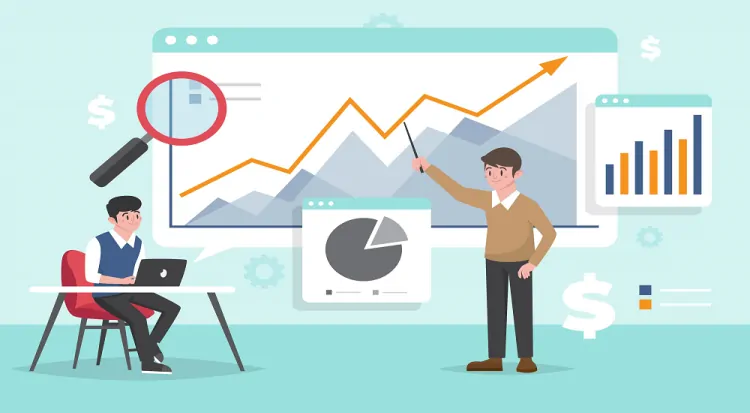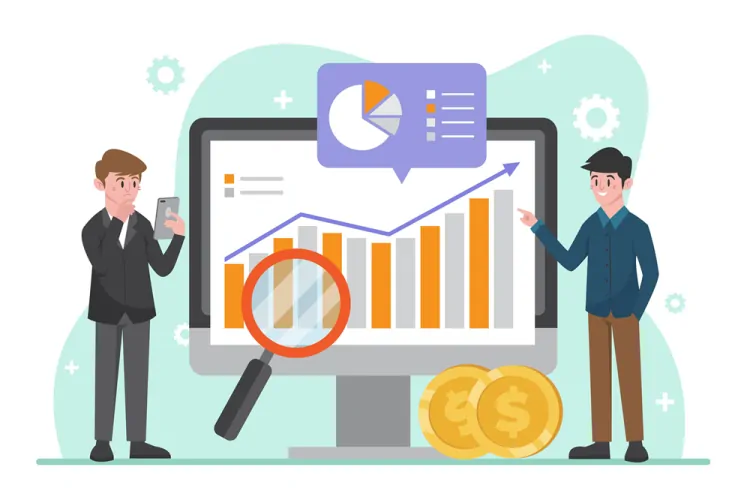How to Determine Product Demand?
This guide delves into the methodologies, strategies, and tools businesses can use to assess product demand effectively.

Understanding and accurately determining product demand is vital for businesses striving to stay competitive. Whether launching a new product or optimizing an existing one, knowing how to gauge demand ensures that you meet customer expectations while avoiding costly mistakes like overproduction or stock shortages. This guide delves into the methodologies, strategies, and tools businesses can use to assess product demand effectively.
What is Product Demand?
Product demand refers to the quantity of a product that consumers are willing and able to purchase at various price points during a specific time. It acts as a compass for businesses, guiding decisions on production, pricing, marketing, and inventory management. Factors influencing product demand include:

- Consumer Preferences: Trends, tastes, and preferences significantly shape what people buy.
- Market Trends: Industry-wide shifts can either increase or decrease demand for specific goods.
- Economic Factors: Changes in income levels, employment rates, and disposable income directly impact demand.
- Competition and Substitutes: The availability of alternative products can either boost or diminish demand.
For businesses, determining product demand is not just about counting potential buyers; it’s about forecasting behavior and planning strategies to align supply with customer needs.
Why is Product Demand Analysis Important?
Businesses that fail to understand product demand risk falling behind competitors. Here’s why demand analysis matters:
- Inventory Management: Prevents stockouts and overproduction, saving costs.
- Marketing Optimization: Informs campaigns to target the right audience at the right time.
- Pricing Strategy: Helps find the balance between competitive pricing and profitability.
- Risk Reduction: Minimizes financial losses due to unsold inventory or missed sales opportunities.
- Improved Customer Satisfaction: Ensures products are available when and where customers need them.
Accurately determining product demand empowers businesses to adapt proactively in a dynamic market environment.
Steps to Determine Product Demand
1. Conducting Thorough Market Research
Market research is the foundation of any demand analysis. By understanding your target audience, competitors, and overall industry dynamics, you gain valuable insights into what drives demand.
- Surveys and Questionnaires: These tools allow businesses to directly ask potential or existing customers about their preferences, needs, and purchasing behavior. For instance, online surveys can gauge interest in a new product concept.
- Focus Groups: Small, curated groups of target customers can offer deep insights into consumer behavior and expectations. This qualitative data is instrumental for refining products and marketing strategies.
- Competitor Analysis: By studying competitors, you can identify gaps in the market or areas where demand is unmet. Tools like SWOT analysis can help pinpoint opportunities.
2. Analyzing Historical Sales Data
Historical sales data provides a treasure trove of information about past performance and demand trends. By analyzing this data, businesses can:
- Identify seasonal patterns or trends.
- Understand how past marketing efforts impacted demand.
- Forecast future demand based on previous growth rates.
For example, if sales spike during holiday seasons, businesses can plan inventory and promotional strategies accordingly. Tools like Microsoft Excel or more advanced analytics software can help process and visualize this data effectively.
3. Leveraging Demand Forecasting Techniques
Demand forecasting is the process of predicting future demand using historical data, market trends, and advanced models. There are two primary methods:
Qualitative Methods
Qualitative techniques rely on expert opinions and market insights. These are particularly useful for new products without historical sales data. Common approaches include:
- Delphi Method: A panel of experts provides insights in multiple rounds until consensus is reached.
- Market Surveys: Directly asking consumers about their future purchase intentions.
Quantitative Methods
Quantitative forecasting uses mathematical models and historical data to predict demand. Examples include:
- Time Series Analysis: Examines patterns in data over time.
- Causal Models: Identifies relationships between variables (e.g., how advertising spend affects sales).
- Econometric Models: Combines economic theories with statistical methods to forecast demand.
Advanced solutions, such as thouSense, employ AI and machine learning to process large datasets, identify hidden patterns, and produce highly accurate forecasts.
4. Monitoring Market Trends and External Factors
External factors, such as economic conditions, geopolitical events, or even weather, can significantly influence product demand. Monitoring these factors is crucial for creating realistic demand forecasts.
Key External Influences
- Economic Indicators: Inflation, unemployment rates, and consumer confidence indexes can signal changes in purchasing behavior.
- Seasonality: Products like winter clothing or holiday decorations see predictable demand spikes during specific times of the year.
- Cultural Shifts: Social trends or movements, like sustainability or health-consciousness, can drive demand for certain products.
By staying attuned to these changes, businesses can adjust their strategies to remain relevant and competitive.
5. Implementing Demand Sensing
Demand sensing focuses on real-time data to capture short-term demand fluctuations. Unlike traditional forecasting, which relies on historical data, demand sensing incorporates live inputs such as:
- Point-of-sale transactions.
- Social media trends.
- E-commerce activity.
For instance, a surge in social media mentions about a trending gadget can signal rising demand. Tools like thouSense integrate demand-sensing capabilities to help businesses make agile decisions.
6. Segmenting the Market
Market segmentation allows businesses to break down their audience into smaller, more manageable groups based on factors like demographics, geography, or buying behavior. Segment-specific analysis provides detailed insights into demand patterns, enabling:
- Tailored marketing campaigns.
- Customized product offerings.
- Region-specific inventory management.
For example, a company selling fitness equipment might notice higher demand among urban millennials interested in home workouts, guiding their production and promotional efforts.
7. Using Advanced Analytical Tools
Modern businesses increasingly rely on technology to assess product demand. Platforms like thouSense offer AI-driven solutions that analyze large datasets, uncover trends and produce highly accurate demand forecasts. Key advantages of using such tools include:
- Greater accuracy through machine learning algorithms.
- Faster analysis and real-time insights.
- Integration of multiple data sources for comprehensive forecasting.
Adopting these tools can give businesses a competitive edge by ensuring they remain data-driven and responsive to market changes.
8. Collaborating Across the Supply Chain
Accurate demand forecasting benefits not only your business but also your supply chain partners. Sharing demand insights with suppliers and distributors ensures alignment and improves overall efficiency. Collaborative demand planning can lead to:
- Reduced lead times.
- Better inventory management.
- Improved supplier relationships.
For instance, sharing forecasts with manufacturers can help optimize production schedules, reducing the risk of delays or excess stock.
9. Continuously Reviewing and Adjusting Forecasts
Demand forecasting is not a one-time activity. Regular reviews and adjustments are necessary to account for:
- Variations between predicted and actual demand.
- New market developments or competitor actions.
- Shifts in consumer preferences.
By treating forecasting as an ongoing process, businesses can refine their models and improve accuracy over time.
The Role of thouSense in Demand Forecasting
thouSense stands out as a leader in forecasting demand solutions. Its AI-driven platform combines machine learning, big data analytics, and demand sensing to provide businesses with actionable insights. From optimizing inventory to enhancing customer satisfaction, thouSense empowers organizations to make smarter, data-driven decisions.
Conclusion
Determining product demand is an intricate yet essential process. By combining market research, historical data analysis, demand forecasting, and modern AI-driven tools like thouSense, businesses can navigate the complexities of demand management with confidence. The benefits are clear: better inventory control, improved customer satisfaction, and maximized profitability.
In today’s fast-paced market, the ability to accurately gauge product demand is not just an advantage—it’s a necessity. Businesses that invest in robust demand forecasting strategies will not only survive but thrive in the competitive landscape.
What's Your Reaction?
















